Topical androgen antagonism promotes cutaneous wound healing without systemic androgen deprivation by blocking β-catenin nuclear translocation and cross-talk with TGF-β signaling in keratinocytes
- PMID: 22276587
- PMCID: PMC5461922
- DOI: 10.1111/j.1524-475X.2011.00757.x
Topical androgen antagonism promotes cutaneous wound healing without systemic androgen deprivation by blocking β-catenin nuclear translocation and cross-talk with TGF-β signaling in keratinocytes
Abstract
Orchidectomy in rodents and lower testosterone levels in men are associated with improved cutaneous wound healing. However, due to the adverse effects on skeletal and sexual tissues, systemic androgen blockade is not a viable therapeutic intervention. Accordingly, we tested the hypothesis that topical application of an androgen antagonist would elicit accelerated wound healing without systemic androgen antagonism. Full-thickness cutaneous wounds were created on adult C57BL6/J mice. Daily topical application of androgen receptor antagonist, flutamide, resulted in improved gap closure similar to orchiectomized controls and faster than orchidectomized mice treated with topical testosterone. In vivo data showed that the effects of androgen antagonism on wound closure primarily accelerate keratinocytes migration without effecting wound contraction. Consequently, mechanisms of testosterone action on reepithelialization were investigated in vitro by scratch wounding assays in confluent keratinocytes. Testosterone inhibited keratinocyte migration and this effect was in part mediated through promotion of nuclear translocation of β-catenin and by attenuating transforming growth factor-β (TGF-β) signaling through β-catenin. The link between Wnt and TGF beta signaling was confirmed by blocking β-catenin and by following TGF-β-induced transcription of a luciferase reporter gene. Together, these data show that blockade of β-catenin can, as a potential target for novel therapeutic interventions, accelerate cutaneous wound healing.
© 2012 by the Wound Healing Society.
Figures
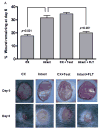

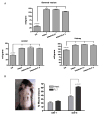

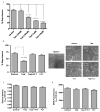
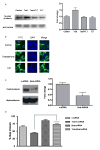
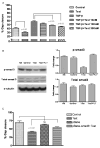

Similar articles
-
Lucidone Promotes the Cutaneous Wound Healing Process via Activation of the PI3K/AKT, Wnt/β-catenin and NF-κB Signaling Pathways.Biochim Biophys Acta Mol Cell Res. 2017 Jan;1864(1):151-168. doi: 10.1016/j.bbamcr.2016.10.021. Epub 2016 Nov 2. Biochim Biophys Acta Mol Cell Res. 2017. PMID: 27816443
-
Up-regulation of fibroblast growth factor (FGF) 9 expression and FGF-WNT/β-catenin signaling in laser-induced wound healing.Wound Repair Regen. 2014 Sep-Oct;22(5):660-5. doi: 10.1111/wrr.12212. Wound Repair Regen. 2014. PMID: 25041895
-
Myostatin-null mice exhibit delayed skin wound healing through the blockade of transforming growth factor-β signaling by decorin.Am J Physiol Cell Physiol. 2012 Apr 15;302(8):C1213-25. doi: 10.1152/ajpcell.00179.2011. Epub 2012 Jan 25. Am J Physiol Cell Physiol. 2012. PMID: 22277753
-
Role of TGF beta-mediated inflammation in cutaneous wound healing.J Investig Dermatol Symp Proc. 2006 Sep;11(1):112-7. doi: 10.1038/sj.jidsymp.5650004. J Investig Dermatol Symp Proc. 2006. PMID: 17069018 Review.
-
β-Catenin and Rho GTPases as downstream targets of TGF-β1 during pulp repair.Cell Biol Int. 2011 Feb;35(2):105-9. doi: 10.1042/CBI20100114. Cell Biol Int. 2011. PMID: 20843298 Review.
Cited by
-
Healing Chronic Wounds: Current Challenges and Potential Solutions.Curr Dermatol Rep. 2018 Dec;7(4):296-302. doi: 10.1007/s13671-018-0239-4. Epub 2018 Oct 23. Curr Dermatol Rep. 2018. PMID: 31223516 Free PMC article.
-
Exposure to androgen deprivation therapy and risk of anastomotic leakage after colorectal cancer surgery.Colorectal Dis. 2025 Jun;27(6):e70126. doi: 10.1111/codi.70126. Colorectal Dis. 2025. PMID: 40462358 Free PMC article.
-
Controlled dual release of dihydrotestosterone and flutamide from polycaprolactone electrospun scaffolds accelerate burn wound healing.FASEB J. 2022 May;36(5):e22310. doi: 10.1096/fj.202101803R. FASEB J. 2022. PMID: 35394674 Free PMC article.
-
Cell migration in diabetic wound healing: Molecular mechanisms and therapeutic strategies (Review).Int J Mol Med. 2025 Aug;56(2):126. doi: 10.3892/ijmm.2025.5567. Epub 2025 Jun 20. Int J Mol Med. 2025. PMID: 40539458 Free PMC article. Review.
-
A Novel Mouse Model for Investigating the Effects of Gender-affirming Hormone Therapy on Surgical Healing.Plast Reconstr Surg Glob Open. 2022 Nov 29;10(11):e4688. doi: 10.1097/GOX.0000000000004688. eCollection 2022 Nov. Plast Reconstr Surg Glob Open. 2022. PMID: 36467118 Free PMC article.
References
-
- Ashcroft GS, Dodsworth J, van Boxtel E, Tarnuzzer RW, Horan MA, Schultz GS, Ferguson MW. Estrogen accelerates cutaneous wound healing associated with an increase in TGF-beta1 levels. Nat Med. 1997;3:1209–15. - PubMed
-
- Gilliver SC, Ashworth JJ, Mills SJ, Hardman MJ, Ashcroft GS. Androgens modulate the inflammatory response during acute wound healing. J Cell Sci. 2006;119 (Pt 4):722–32. - PubMed
Publication types
MeSH terms
Substances
Grants and funding
LinkOut - more resources
Full Text Sources
Other Literature Sources
Miscellaneous

